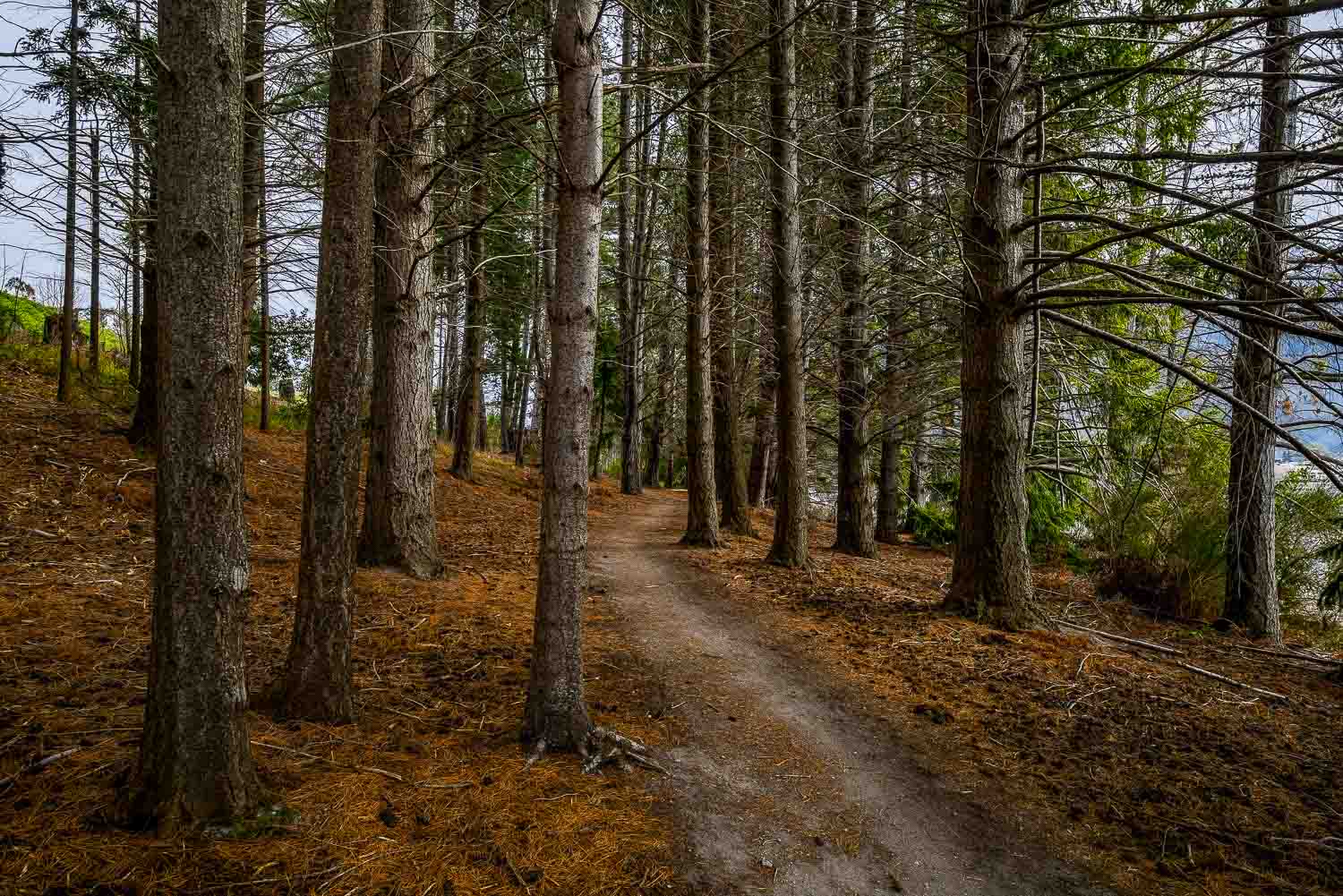Bringing a Sense of Harmony to Your Photographs
A mountain track over a high country tussock pass on the road between Queenstown and Wanaka, New Zealand.
This photo was made on the Crown Range during a drive from Queenstown to Wanaka on the South Island of New Zealand.
As you can see this is a photograph of a mountain scene leading the eye up towards sky and clouds. But what ties these elements together and makes for a harmonious image?
Opposite Colors Strengthen Each Other
On one level it's the color contrast between the warm grasses and the cool blue sky. It's the warmth in the grasses that amplifies the cool, bluish colors in the sky. Likewise the cool, saturated color of the sky also enhances the warm color of the grasses.
Opposite colors, placed adjacent to each other, vibrate in a way that heights the power of each of those colors.
Digging Deeper To Better Understand Why Photos Work
The success of your photos rely as much on similarities as they do upon differences. Notice how the texture of the grasses is suggested or referred to in the clouds above.
It's subtle, I grant you, but it's there nonetheless.
Similarities within an image are sympathetic to each other, even though they may reside in very different parts of the photo.
It's these kind of connections that bring a sense of balance and harmony to the images you make.
About to Travel?
The Power Of Duality
Working with dualities (i.e., opposites) will help you produce more compelling photographs.
It's the tension between the opposites of, for example, male and female; light and dark; and warm and cool that allow us to produce visual arresting images.
“It’s the harmonious combination of opposite elements that make for a successful composition.”
As Above So Below
Taking our reading of that photo a step further might lead one towards exploring the more spiritual or mythic elements within the image.
I refer here to the contrast between the earth bound elements, associated with land and rock, compared to the more intangible, metaphorical aspects associated with sky and cloud.
And it's the composition element, texture, that allows us to feel the connection between the two otherwise disparate elements of earth and sky.
A stunning view on a beautifully clear day over Lake Hayes towards distant mountains, Otago, New Zealand.
The same is true for this photo of the lovely Lake Hayes near Queenstown on the south island of New Zealand.
In many ways it's a postcard photo.
The day was sunny with only a breath of wind. I put a polarizing filter in front of my lens, to saturate the colors and reduce the chance that the bright light would reflect color and texture of the surfaces (e.g., leaf, grass, water and sky) within the image.
But even a good postcard image relies on strong composition.
Notice how the trees, hillsides and mountains serve to frame the body of water and how the water becomes a mirror that both reflects and brings together the elements of earth and sky.
Your Photos Are More Than What You See
There's so much going on around us that much of our life is given over to distractions. Living a creative life helps focus our attention on what really matters.
One of the greatest gifts associated with photography is that it encourages us to focus our attention on what's important: that which is visible within the boundaries of the photographic frame and that which is referred to.
In Photography Less Is More
“What we exclude from the frame is as important as what we include.”
I believe the above quote to be a fundamental concept in composition.
It's at the very heart of minimalism and can also serve to clarify any theme, message and meaning in the photographs we create.
It's through simplicity of content that message and meaning are more clearly derived.
We should all be mindful to make photos that are underpinned by the notion that less is more.








